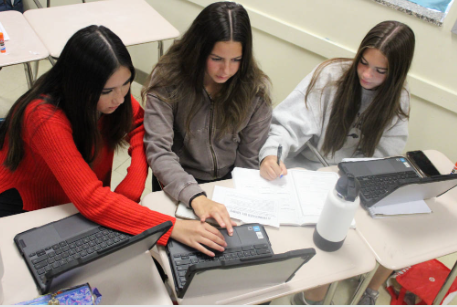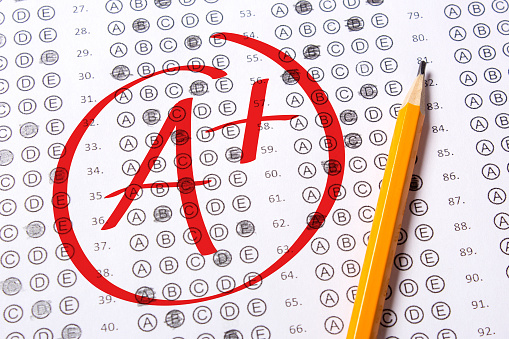An AI Makes a Major Breakthrough in Fusion Power

The tokamak in the Swiss Plasma Center. Credit: Curdin Wüthrich, SPC/EPFL
March 2, 2022
Generating heat and electricity using nuclear fusion, the reaction that powers the stars, has long been a dream of scientists and engineers all over the world. Yet after about seventy years of research, the practical use of fusion power is still in its infancy, decades away from integration into our electrical grid. However, progress is certainly being made – and recently, a paper was published that revealed how scientists had used an artificial intelligence to control the plasma inside a fusion reactor and make a major breakthrough in the field.
Nuclear fusion is a nuclear reaction in which the nuclei of two atoms fuse, releasing energy as the atoms combine into a heavier atom. In the sun, four light hydrogen atoms, under incredible heat, can fuse together to create a single helium atom. In that reaction, a small amount of mass will be lost, but this will result in a huge amount of energy being released; this is demonstrated by Einstein’s famous equation E=mc2, which equates a small amount of mass with a large amount of energy. This energy is enough to power the sun, so if humans could harness it, it would give us an efficient supply of clean energy to last us for a significant amount of time.
The idea of using nuclear fusion to generate energy for humans was pioneered by Andrei Sakharov and Igor Tamm in 1950. They proposed a design called a tokamak, which uses a toroidal (or bagel-shaped) chamber and a powerful electric current. The electricity turns the gas inside the chamber into a plasma, while magnetic coils confine the plasma to the chamber so it can be controlled. Although other designs were proposed, the tokamak is still considered to be the design most likely to bring about an age of fusion power.
However, there are many complications which make nuclear fusion more difficult than it may seem. For one, the level of heat required is extremely high; it would require a temperature of 100 million degrees Celsius (180 million degrees Fahrenheit). Another problem is that the most efficient molecules to fuse together would be two isotopes of hydrogen, known as deuterium and tritium. Deuterium is common, but tritium is a radioactive isotope that is particularly rare. It has a half-life of 12 years, and it must be generated by exposing lithium to energetic neutrons.
Despite these issues, fusion has been achieved in the past. The problem that is unique to nuclear fusion is that nobody has managed to get more energy out of the reaction than what they put in. The world record was set by the Joint European Torus (JET) in 1997, which managed to produce two-thirds of the energy that was used to start the reaction in the first place. The International Thermonuclear Experimental Reactor (ITER) aims to produce ten times the energy that is put in.
Still, progress is being made. A paper published on February 17, 2022 revealed a new architecture which would allow the plasma in the chamber to be controlled with a much simpler controller compared to the previous designs. One issue with tokamaks is the level of precision needed to confine the plasma inside the chamber. The magnetic coils must be adjusted thousands of times per second so that the chamber does not lose heat due to the plasma touching the walls. The paper offered a solution in the form of an artificial intelligence that could “sculpt” the plasma. It was trained with deep learning and tested in the Swiss Plasma Center.
The authors of the article described their framework as having “the potential to shape future fusion research and tokamak development.” In addition, physicist Gianluca Sarri stated that “This AI is, in my opinion, the only way forward.” If these projects can help optimize and make fusion reactors more practical, the implications would be huge; the deuterium content of seawater means that one gallon of seawater could produce the same amount of energy as 300 gallons of gasoline. However, these dreams will come true only if projects like ITER reach their goals of energy production and display the benefits of fusion power for the world to see.
References:
- Degrave, J., Felici, F., Buchli, J. et al. Magnetic control of tokamak plasmas through deep reinforcement learning. Nature 602, 414–419 (2022). https://doi.org/10.1038/s41586-021-04301-9
- Baramsai, Bayarbadrakh, et al. “NASA’S NEW SHORTCUT TO FUSION POWER.” IEEE Spectrum, 27 February 2022, https://spectrum.ieee.org/lattice-confinement-fusion. Accessed 27 February 2022.
- EUROfusion. “History of Fusion.” EUROfusion, https://www.euro-fusion.org/fusion/history-of-fusion/. Accessed 27 February 2022.
- Jassby, Daniel, et al. “Fusion reactors: Not what they’re cracked up to be.” Bulletin of the Atomic Scientists, 19 April 2017, https://thebulletin.org/2017/04/fusion-reactors-not-what-theyre-cracked-up-to-be/. Accessed 27 February 2022.
- Katwala, Amit. “DeepMind Has Trained an AI to Control Nuclear Fusion.” WIRED, 16 February 2022, https://www.wired.com/story/deepmind-ai-nuclear-fusion/. Accessed 27 February 2022.
- Shead, Sam. “DeepMind scientists trained an AI to control nuclear fusion.” CNBC, 18 February 2022, https://www.cnbc.com/2022/02/18/deepmind-scientists-trained-an-ai-to-control-nuclear-fusion-.html. Accessed 27 February 2022.
- Snowder, Brad. “AstroPages | Sun and Fusion.” Western Washington University, https://www.wwu.edu/astro101/a101_sun.shtml. Accessed 27 February 2022.
- United States Department of Energy. “DOE Explains…Deuterium-Tritium Fusion Reactor Fuel.” Department of Energy, https://www.energy.gov/science/doe-explainsdeuterium-tritium-fusion-reactor-fuel. Accessed 27 February 2022.
- United States Department of Energy. “DOE Explains…Tokamaks.” Department of Energy, https://www.energy.gov/science/doe-explainstokamaks. Accessed 27 February 2022.
- WION. “’Breakthrough in Physics’: Artificial Intelligence successfully controls plasma in nuclear fusion experiment.” WION, 21 February 2022, https://www.wionews.com/science/breakthrough-in-physics-artificial-intelligence-successfully-controls-plasma-in-nuclear-fusion-experiment-455165. Accessed 27 February 2022.









